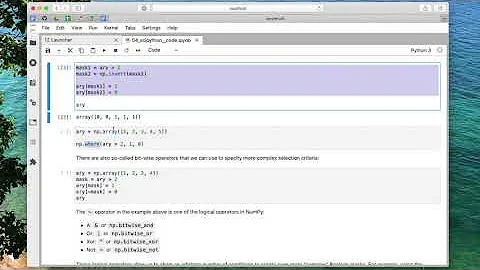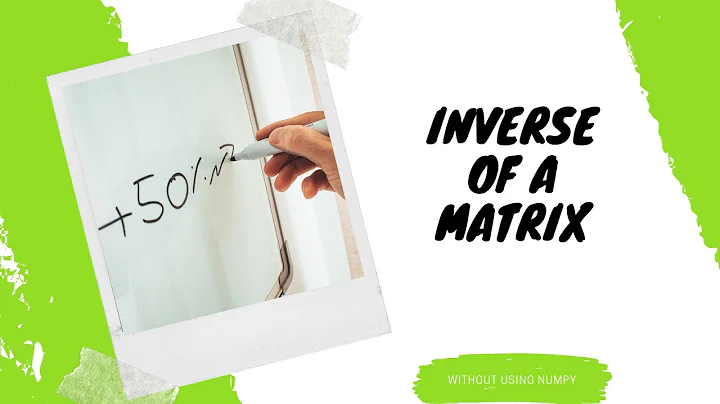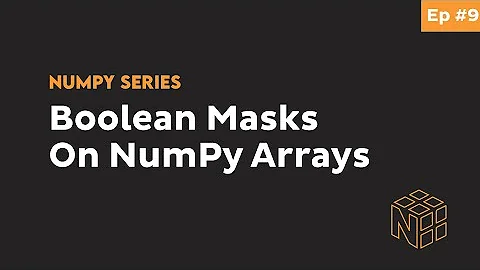Numpy inverse mask
36,944
Solution 1
import numpy
data = numpy.array([[ 1, 2, 5 ]])
mask = numpy.array([[0,1,0]])
numpy.ma.masked_array(data, ~mask) #note this probably wont work right for non-boolean (T/F) values
#or
numpy.ma.masked_array(data, numpy.logical_not(mask))
for example
>>> a = numpy.array([False,True,False])
>>> ~a
array([ True, False, True], dtype=bool)
>>> numpy.logical_not(a)
array([ True, False, True], dtype=bool)
>>> a = numpy.array([0,1,0])
>>> ~a
array([-1, -2, -1])
>>> numpy.logical_not(a)
array([ True, False, True], dtype=bool)
Solution 2
Latest Python version also support '~' character as 'logical_not'. For Example
import numpy
data = numpy.array([[ 1, 2, 5 ]])
mask = numpy.array([[False,True,False]])
result = data[~mask]
Related videos on Youtube
Comments
-
ustroetz almost 2 years
I want to inverse the true/false value in my numpy masked array.
So in the example below i don't want to mask out the second value in the data array, I want to mask out the first and third value.
Below is just an example. My masked array is created by a longer process than runs before. So I can not change the mask array itself. Is there another way to inverse the values?
import numpy data = numpy.array([[ 1, 2, 5 ]]) mask = numpy.array([[0,1,0]]) numpy.ma.masked_array(data, mask) -
user508402 over 7 yearsCopying your example, I find different results for logical_not and the tilde operator. Where the former results in the expected mask ([[ True False True]]), the latter makes all mask elements True







